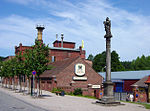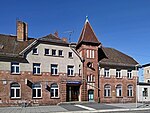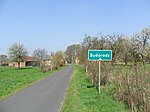Neuzelle Abbey
1260s establishments in the Holy Roman Empire1268 establishments in Europe13th-century Roman Catholic church buildings in GermanyBaroque church buildings in GermanyChristian monasteries disestablished in the 19th century ... and 5 more
Christian monasteries established in the 13th centuryCistercian monasteries in GermanyFrederick William III of PrussiaLocalities in Oder-SpreeRoman Catholic churches in Brandenburg

Neuzelle Abbey is a Cistercian monastery in Lower Lusatia, Germany, in the historic border region between Lower Lusatia and the March of Brandenburg. It is regarded as one of the most significant Baroque monuments in the North of Germany. The monastery complex consists of several churches, cloister, cloister garden and a brewery.
Excerpt from the Wikipedia article Neuzelle Abbey (License: CC BY-SA 3.0, Authors, Images).Neuzelle Abbey
Stiftsplatz, Neuzelle
Geographical coordinates (GPS) Address External links Nearby Places Show on map
Geographical coordinates (GPS)
| Latitude | Longitude |
|---|---|
| N 52.0906 ° | E 14.6522 ° |
Address
Kloster Neuzelle
Stiftsplatz
15898 Neuzelle (Neuzelle)
Brandenburg, Germany
Open on Google Maps









